Physical Address
304 North Cardinal St.
Dorchester Center, MA 02124
Physical Address
304 North Cardinal St.
Dorchester Center, MA 02124
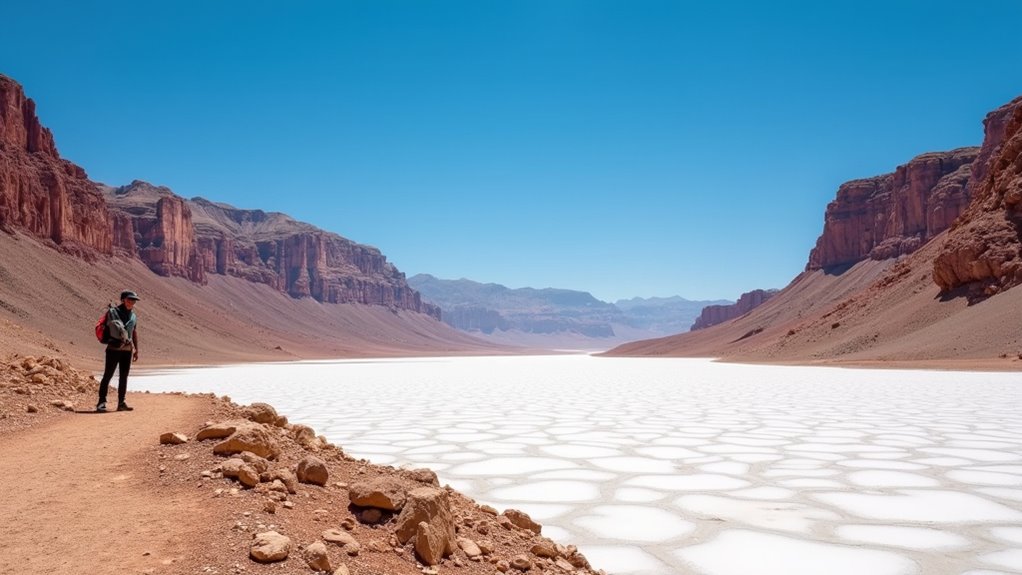
Navigate Death Valley's diverse trails, from golden canyons to rugged peaks, and discover why it's the ultimate testing ground for hikers.
You’ll find that Death Valley isn’t just about extreme temperatures and barren landscapes – it’s your ultimate proving ground for hiking mastery. From gentle walks through golden canyons to demanding ascents up rugged peaks, the park offers you a perfect progression of challenges to test and enhance your trail skills. Whether you’re a novice seeking to build confidence or an experienced hiker ready to push your limits, Death Valley’s diverse terrain holds the key to your next outdoor achievement.
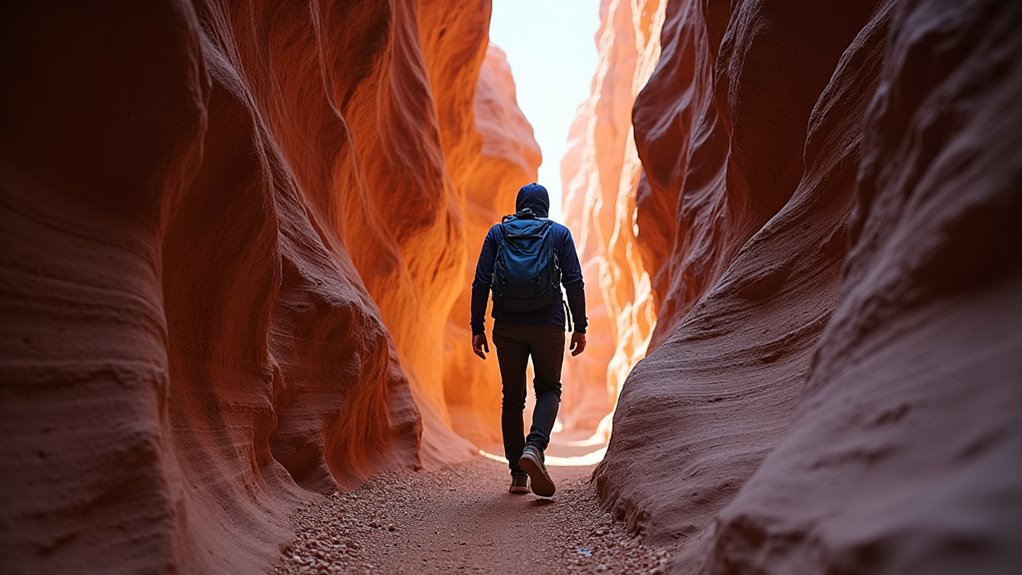
While many national parks offer standard marked trails, Death Valley National Park distinguishes itself with its remarkable diversity of hiking terrain.
You’ll find yourself traversing everything from cross-country routes across vast desert landscapes to dramatic canyon paths that wind through golden-hued walls. Each trail type offers a unique adventure: ridge hikes reward you with sweeping panoramic views, while sand dune trails let you experience the ever-shifting desert environment. Fun activities to enjoy while camping can also be experienced in the park.
Whether you’re exploring the salt-crusted expanse of Badwater Basin or maneuvering through the rugged slot canyons of Golden Canyon, you’ll encounter distinct geological features at every turn. For safety during these adventures, visitors should note that towing fees average $2,000 if vehicle assistance is needed in the park’s remote areas.
Death Valley’s diverse terrain reveals nature’s artistry, from crystalline salt flats to weathered canyon walls carved by ancient waters.
The park’s varied landscapes range from the towering heights of Telescope Peak to the otherworldly formations along Artist’s Drive, ensuring you’ll never experience the same hike twice.
When hiking in Death Valley’s unforgiving desert landscape, your survival depends on bringing the right gear and following essential safety measures.
You’ll need long pants, breathable sun shirts with SPF protection, and a wide-brimmed hat to shield yourself from intense sunlight. Don’t forget your hiking shoes with lug soles and moisture-wicking socks for proper foot protection.
Pack at least one gallon of water per day, and bring high-energy snacks to maintain your stamina. Having electrolyte supplements on hand is crucial for preventing dehydration in extreme heat. Your backpack should include a first aid kit, multi-tool, and emergency repair items.
You’ll appreciate trekking poles for stability, especially on challenging trails like Telescope Peak. Remember to layer your clothing for temperature changes and always inform others of your hiking plans. Cold-weather camping strategies can also be helpful for navigating the desert’s sudden temperature drops.
Carry a communication device – it could save your life in remote areas.
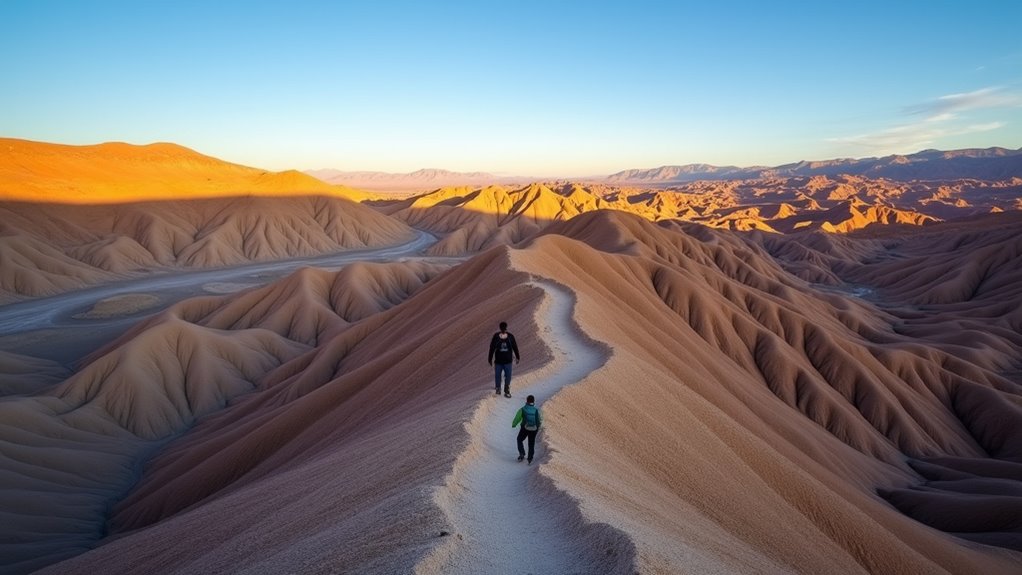
Timing your Death Valley hikes strategically can make the difference between an enjoyable adventure and a grueling ordeal.
Smart planning can transform your Death Valley trek from a draining challenge into an unforgettable outdoor experience.
If you’re tackling easy trails like Zabriskie Point or Sand Dunes, you should aim to start early morning or opt for late afternoon to avoid intense sun exposure.
For moderate challenges like Mosaic Canyon and Fall Canyon, spring and fall seasons offer ideal conditions. Many of these trails, like the Darwin Falls trail, feature unique rewards including seasonal waterfalls.
For difficult trails such as Grotto Canyon or Hell’s Gate Buttes, plan your winter visits to benefit from cooler temperatures.
You’ll need to start these challenging hikes early before the heat intensifies.
Remember, summer’s brutal temperatures make most trails dangerous, while winter (December through February) provides the most comfortable hiking conditions across all skill levels.
Always check weather forecasts and park alerts before heading out.
As you venture into Death Valley’s diverse landscape, you’ll encounter some of North America’s most dramatic elevation changes, with trails spanning from Badwater Basin’s depths at -282 feet to Telescope Peak’s towering height of 11,049 feet.
These extreme elevation variations present unique challenges you’ll need to prepare for. You’ll face temperature swings from scorching heat in the valleys to near-freezing conditions at higher elevations. During summer months, ground temperatures reach 201°F, making proper footwear and timing your hikes essential. Essential tips for a safe and enjoyable camping adventure can help you plan for these conditions.
The terrain varies dramatically too, from sandy flats to rocky talus, requiring different hiking techniques and appropriate gear.
To tackle these challenges safely, you’ll need strong navigation skills and plenty of water. Remember to acclimatize gradually when ascending to prevent altitude sickness, and always stay alert for hazards like snakes and loose rocks.
The demanding elevation gains will test your physical and mental endurance.
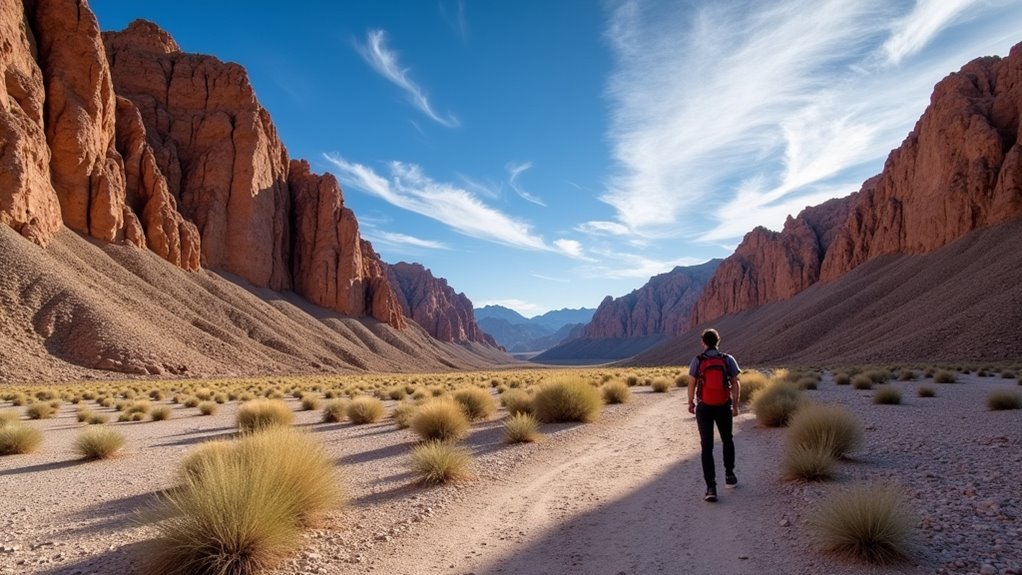
Death Valley’s vast wilderness calls photographers and nature enthusiasts with an incredible array of scenic vistas and otherworldly landscapes.
You’ll find unmatched panoramic views at Zabriskie Point during sunrise, while Dante’s View offers a commanding perspective of Badwater Basin from over 5,000 feet up. The best time to explore this area is during golden hour, providing optimal lighting conditions for capturing the landscape’s dramatic features.
Don’t miss the wind-sculpted Mesquite Flat Sand Dunes at golden hour, where you can capture nature’s artistry in pristine sand patterns.
Wind-carved ridges and pristine patterns await photographers at Mesquite Flat Sand Dunes, where golden light reveals nature’s delicate artistry.
For unique geological wonders, head to Artists Palette on Artist’s Drive, where mineral-rich hills showcase a stunning spectrum of colors.
The smooth marble walls of Mosaic Canyon and the twisting passages of Golden Canyon provide dramatic photo opportunities.
When conditions permit, Badwater Basin’s salt flats can transform into mirror-like surfaces after rain, creating surreal reflection shots.
When planning your first hiking adventure in Death Valley, proper preparation can mean the difference between an exhilarating experience and a dangerous ordeal. You should aim to carefully check weather conditions and plan your hike during cooler months to avoid the extreme temperatures that can exceed 120°F.
Pack at least one gallon of water per person daily, and don’t forget essential sun protection gear. Consider making a stop at the Furnace Creek Visitor Center to get updated trail conditions and safety information before starting your hike. Stay alert for wild animals while hiking in the Himalayas, as they can pose a serious threat.
For your initial trek, stick to beginner-friendly trails like the Golden Canyon Loop or Badlands Loop, which offer manageable distances and moderate elevation gains. You should avoid challenging routes like Telescope Peak until you’ve gained more experience.
Remember to inform others of your plans, use detailed maps or GPS, and bring a fully charged phone. Stay on marked trails and consider hiking with a companion for added safety.
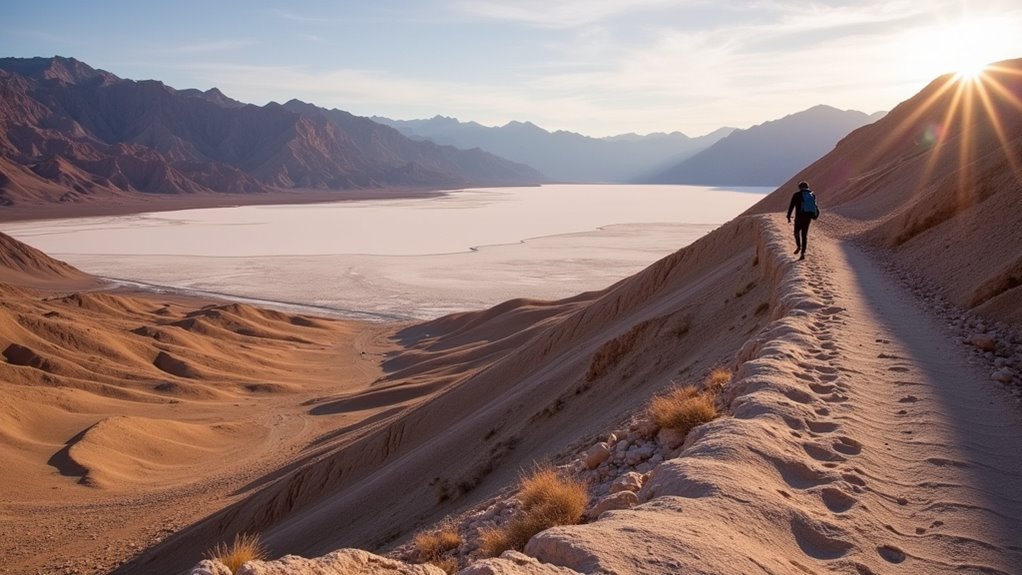
Since Death Valley offers an incredible variety of hiking experiences, you should aim to focus on its most rewarding trails to maximize your adventure.
The Golden Canyon Gower Gulch Loop distinguishes itself as a must-do trek, featuring dramatic slot canyons and badlands across its 4.3-mile span. You’ll find the Red Cathedral detour particularly worthwhile for its stunning vistas. With an elevation gain of 950ft, this intermediate-level trail provides a satisfying challenge for hiking enthusiasts.
For shorter excursions, don’t miss the Natural Bridge’s one-mile trail or the mesmerizing Mesquite Flat Sand Dunes. Bringing a boat along can enhance your camping experience by allowing you to explore waterways and access remote areas.
If you’re seeking unique geological wonders, head to Mosaic Canyon’s polished rock formations.
To make the most of these popular destinations, arrive during golden hour for ideal lighting and cooler temperatures.
Remember to pack plenty of water and sun protection, as Death Valley’s extreme climate demands careful preparation.
You’ll find Death Valley’s trails transform both your hiking abilities and perspective, just like Sarah Chen, who started with the gentle Golden Canyon Loop and progressed to conquering Telescope Peak within one season. Whether you’re traversing the salt flats or scaling rugged canyons, each trail offers unique challenges that’ll build your skills. Don’t wait – pack your gear, check the weather, and embrace Death Valley’s legendary terrain as your ultimate training ground.